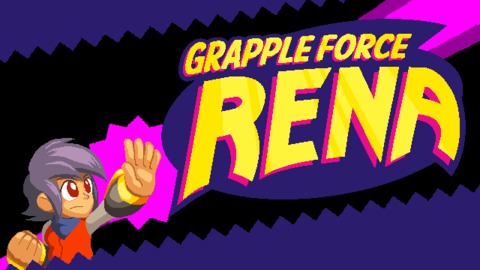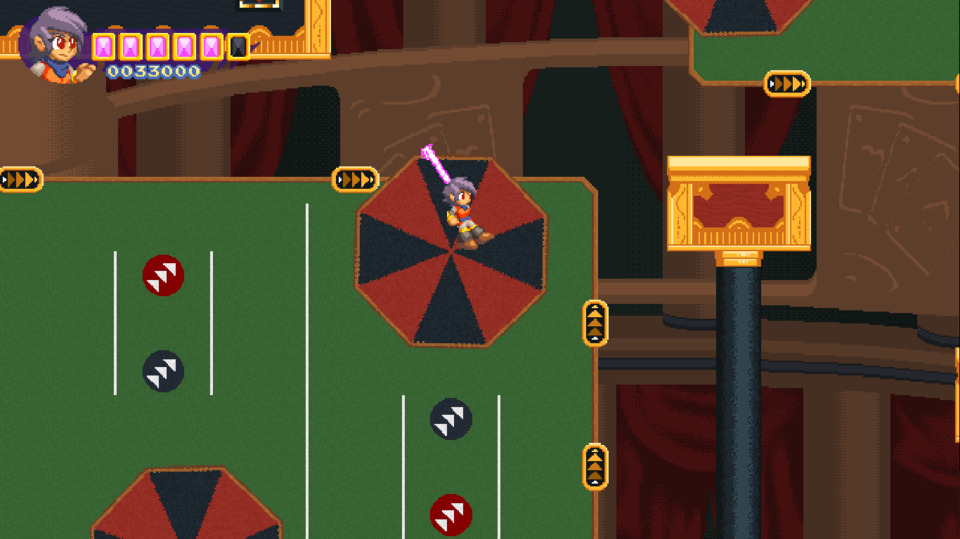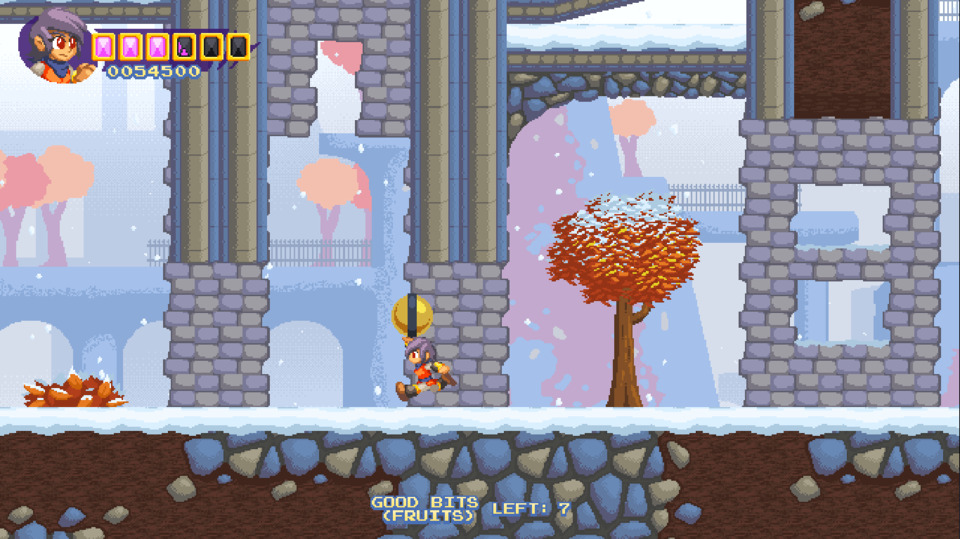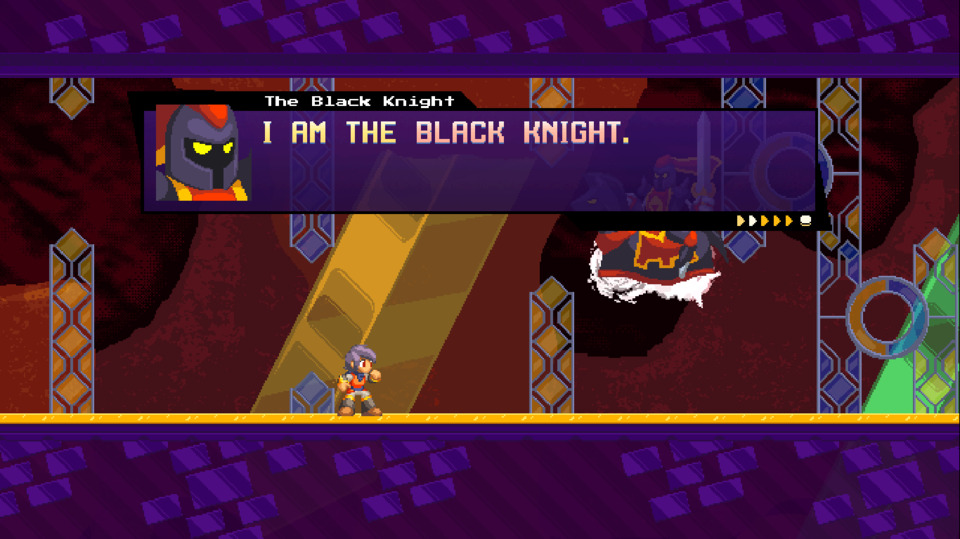Indie Game of the Week 288: Grapple Force Rena
By Mento 0 Comments

With some indie throwbacks, it's obvious the developers had one specific franchise - maybe even one specific game within that franchise - in mind when crafting their homage. With others, it feels like the finished product is a Frankenstein of bits and pieces from a dozen different playthroughs from the developers' past, and their goal isn't so much to resurrect a single game than a whole era for gaming. Games like Undertale and Oniken don't so much call to mind a sole archaic forebear than they do the excitement of pouring over the reviews section of a Nintendo Power or downloading the inventive RPG Maker projects of your friends who all grew up with EarthBound and wondered why more RPGs didn't have the same imagination or subversive whimsy. Grapple Force Rena, for better or worse, feels like an amalgam of underappreciated 16-bit games - especially those for the Mega Drive - wrapped up in a semi-coherent package with just a few issues here and there.
The eponymous heroine Rena is a youth who styles herself as her peaceful village's hero and protector, helped in no small part by a pair of magical gauntlets she found while adventuring in the woods near her home. These gauntlets project a beam of light that attaches itself to walls, ceilings, objects, and enemies alike, allowing her to drag those items to her or, in the case of anything heavier, drag herself towards them as a means of traversal. A few platformers back then had grapple mechanics, but the game that most quickly came to mind - largely due to the game's attempts to replicate Sega Mega Drive's music chip and many of its sound effects - is Sega's own Ristar and his telescopic limbs. Equally, the game feels beholden to the elastic swinging aspirations of Umihara Kawase (recently given a new lease of life after it and its sequels were ported to Steam and elsewhere), to the inventive and occasionally bizarre level mission structure of Gunstar Heroes and Treasure's other output, and many aesthetic choices from Sonic the Hedgehog and other mascot platformers of that time. Sadly, the Mega Drive was also home to many of what I've heard reviewers (mostly Americans) pejoratively refer to as "Amiga platformers": those that tend to put style over substance with their muddled visuals and level design, creating obtuse, labyrinthine stages that regularly have you checking dead-ends and circling back on yourself in pursuit of whatever handful of targets you still need to hit to complete the stage. Some of Rena's more maze-like stages are certainly guilty of that.

A typical stage will present one of several goals: get to the end, find or destroy a certain number of items or enemies, complete a race or other timed challenge, or fight a boss. You are scored a letter grade based on four criteria: time taken, health retained, enemies defeated, and gems collected. The scores don't really matter too much, but that whole grading system was a cheap and cheerful way for older games to give players new objectives to pursue once they'd already completed the main story, and with only thirty stages Grapple Force Rena's score system embodies a similar role. To the game's credit, you could either go all in on hunting enemies and finding collectibles, eschewing any hope of a decent time or holding onto a deep reserve of health, and still emerge with a decent score; ditto for those who take the opposite route, completing a stage as quickly as possible by running and swinging past everything. The score system is also flexible, giving more or less value to any of the four scoring criteria depending on the stage: a race-like stage will emphasize time taken more than enemies defeated, for instance, and a boss fight will always negate points earned for enemies defeated and gems collected (since it typically has neither) for the sake of a double payout for time taken and health retained. For as much as I don't care for games that go the whole scoring route, letting you know in no uncertain terms how much you suck and quickly dispelling any élan you might be feeling for finally completing a nightmarish stage, I'll admit that Grapple Force Rena has given much thought to their own approach.
If you aren't too familiar with grapple platformers like Umihara Kawase, the game's on boarding process is relatively gentle and doesn't require much in the way of showy traversal and point-to-point grapples. That traversal is key to finding shortcuts and valuables, once you have a better handle on it, and also plays into the scoring system as a secondary means of longevity. For new players, though, there's usually a more traditional way to move through levels that won't require a whole lot of very timing-intensive hooking onto ceilings and wall panels as you whizz past. As well as her gauntlets, which are also her sole means of attacking enemies by grabbing and throwing them into walls and other enemies (and very reminiscent of Treasure once again, in particular Mischief Makers), Rena also has a wall jump which gets her through narrow vertical passageways quickly and in some levels can hitch a ride on fast-moving vehicles to reach the goal even faster. It has that Sonic dichotomy where the levels are simultaneously built for speeding through while also rewarding cautious exploration, but that aforementioned flexible scoring system makes either approach viable when left to the player's discretion.

Graphically and certainly musically, the game hearkens to the Mega Drive in much the same way its mechanics and attitude do, and care's been taken to make the game feel like the mid-tier 16-bit Sega platformer that never was. The game's sole group of collectibles are cassette tapes that add new tracks to the main menu's sound test, which given the quality of said soundtrack makes them a more compelling scavenger hunt target than concept art or tchotchkes with no purpose. (Alas, there doesn't seem to be a way to track where missing cassette tapes might be found from the stage overview, unless that's a post-game privilege.) The writing has that same kind of snappy back and forth you might expect from a mascot platformer from the era, though I will say I didn't anticipate the sudden narrative shift the game takes towards its two-thirds point; I stopped shortly after that to pen this review, but I am curious to see how the game wraps itself up after pulling the rug out from underneath the player.
Yet, for its many fine qualities, I'm finding Rena more annoying to play than it's sometimes worth. Occasionally it's the fault of the grapple mechanics: it's extremely tough to be accurate with the grapple beam, and the game does not provide any amount of "auto-aim" wriggle room when it comes to hooking onto nearby enemies or objects - you have to be pixel perfect when you launch that beam out. Sometimes it's the fault of how the game presents its challenges and then sabotages itself, say with a stage with a time-based element to its scoring that also has an RNG aspect that can ruin the chances of earning a decent time through pure bad luck (there's a whole gambling-themed tower with dice puzzles that work like this, which was the one part of this game that reminded me of Gunstar Heroes the most). Many enemies are deadly up close, which normally isn't an issue since the grapple beam has a long range to it, but there's many cases where a foe might be hiding behind a wall or outcropping before they hop into range. Your health bar isn't miniscule and you can regain HP by collecting the pink gems found everywhere so I can't say I've died too often, but I've taken damage many times where it felt like I had little chance of catching an enemy before it got too close, especially when you compound that issue with how inaccurate the grapple can be. The constant negative reinforcement of earning poor scores from not knowing the levels too well (how could I? They're all new to me) is also getting me down a little bit too, even for as inconsequential as all these Cs and Ds will probably end up being. I think the game attends well to the gaggle of players who grew up with the Mega Drive as their first system and still retain the most fondness for it as a result - after all, whatever games you played as a ten-year-old have a better chance of remaining firm favorites than anything new - but as a SNES kid I don't think its charms are quite as potent for me, and certainly don't outweigh the parts that are dragging the whole experience down.

Rating: 3 out of 5.
| < Back to 287: Epistory: Typing Chronicles | The First 100 | The Second 100 | > Forward to 289: Grizzland |
